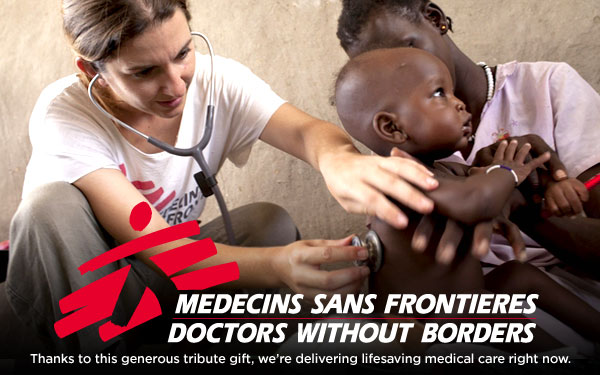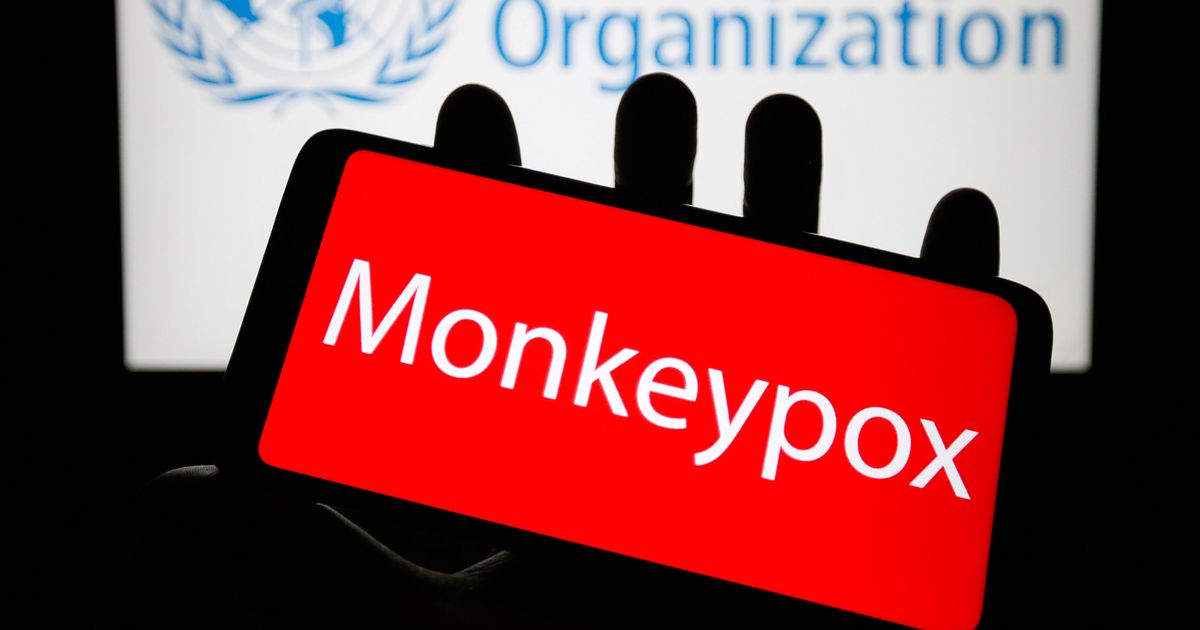Health
MSF Nurse Wins HIV-TB Prize for Life-Saving Test Research

By Modupe Gbadeyanka
Zimbabwean Doctors Without Borders (MSF) nurse and researcher Chenai Mathabire has won an HIV/TB Research Prize at this year’s International Aids Society Conference on HIV Science (IAS2017). Through a study conducted in Malawi and Mozambique, Chenai has provided strong evidence that an easy-to-use point-of-care TB LAM test, which quickly diagnoses tuberculosis (TB) in severely ill HIV patients, is feasible to use in real-life clinics with high numbers of HIV-TB patients.
TB is the biggest killer of people living with advanced HIV, with over 400,000 patients dying each year from the disease.
People with advanced HIV, also known as Acquired Immune Deficiency Syndrome (AIDS) have very weakened immune systems, leaving them susceptible to common infections, which can quickly become deadly.
Successfully treating ill AIDS patients involves rapidly assessing the strength of their immune systems and putting them on the right treatment straight away, whether they have TB or another disease deadly to HIV patients, cryptococcal meningitis.
However, in poorer countries, limited laboratory and X-ray facilities, and the time spent waiting on results can mean long and often deadly delays for sick patients arriving at clinics or hospitals. At the same time, people with late-stage HIV often can’t produce enough sputum for more common TB sputum tests so common tests such as sputum microscopy cannot be done. X-rays are also less useful to detect TB in people with advanced HIV.
At $3 per test, the TB LAM test offers a quick, simple and cost-effective alternative that gives on-the-spot results in 30 minutes. Yet despite being available since 2010, only 140,000 TB LAM tests are used each year.
“In Malawi, some HIV patients with suspected TB were waiting months for laboratory or X-ray results to come back. Clinicians don’t like to start patients on treatment based only on clinical signs and symptoms, they prefer to have a diagnostic test result,” says Chenai, who was responsible for implementing and supervising the study. “The TB LAM test helped them make that decision, and they felt better about starting HIV patients on TB treatment. It doesn’t replace existing tests, but adding this test helps us identify more TB cases and can improve the patients’ chances of survival.”
The test uses the HIV patient’s urine to detect LAM (Lipoarabinomanan), a protein created when TB bacteria cells break down. The lower the patients’ immunity, which is measured by numbers of CD4 T-cells, the more LAM appears in the urine and the more sensitive the test becomes. This is why the test is recommended for use in patients with CD4 cells below 100. The MSF study found the test was well accepted by staff, easy to use, and led to better, faster results than sputum or X-ray tests. Nearly 99% of TB LAM test patients received a timely result, versus 70% with sputum and 35% with X-rays.
Currently the main barrier to wider use of the TB LAM test by national governments is that it isn’t included in country guidelines and national TB programmes are not actively pushing it. Use of the TB LAM test has been recommended by the new WHO guidelines for advanced HIV for use in severely ill patients in hospitals but not yet in primary care, given the test’s decreased accuracy in patients with stronger immune responses.
MSF will use the study to advocate for health ministries in countries with high HIV TB burdens to use the TB LAM test in primary care and hospital centres, as well as include TB LAM within a diagnostic package for patients with advanced HIV. This would include point-of-care tests for CD4 (to allow rapid bed-side assessment of immune strength), cryptococcal meningitis and TB to help quick diagnosis and, most importantly, improve patients’ chances of survival.
MSF currently uses TB LAM as part of a diagnostic package in HIV projects in Democratic Republic of Congo (DRC), Guinea, Kenya, Malawi, Mozambique, Niger, Uganda and Zimbabwe. MSF currently supports over 230,000 people living with HIV on antiretrovirals in 19 countries, with a focus on free quality care, and provides free hospital-based care for people living with advanced HIV in DRC, Kenya Guinea, and Malawi.
Health
Sault Tribe Enacts Smoking Ban in Kewaunee

Health and comfort have become increasingly essential issues lately, and this has not gone unnoticed in entertainment venues. The Sault Tribe, which operates the Kewadin Casino, has decided to ban smoking in five gambling establishments. This innovation is aimed at creating a healthier environment for all visitors and employees.
Health and comfort come first
Tribal representatives emphasized that people’s health is their top priority. The decision to ban smoking was a logical step toward positive change. “As a tribal government, we are focused on improving health, and the move to ban smoking in casinos is the right step forward,” notes one tribal speaker. This means caring about the health of visitors and the well-being of the employees who work in these facilities daily.
The Sault Tribe has been actively gathering opinions from its customers and employees, and the results have been unequivocal: many are in favor of banning smoking. “We have heard from many customers and employees that a smoking ban is the right step forward,” states a tribal spokesperson. Such feedback confirms that concern for health and well-being is becoming increasingly important to the gambling industry.
What will change at Kewadin casinos?
In the weeks following the passage of the amendments, Kewadin casinos located in Sault Ste. Marie, St. Ignace, Manistique, Christmas, and Hessel will begin implementing the new policy. The smoking ban will be in effect in all establishments, including gaming rooms, restaurants, and recreational facilities. This approach will not only make the casino experience more enjoyable for non-smoking visitors, but it will also create a safer environment for employees who spend much time in the gaming rooms.
Positive implications for business and society
The adopted initiative will not only bring health benefits but will also affect the success of businesses in the long run:
- The actions taken also emphasize the Sault Tribe’s social responsibility. They are not just in business but also show concern for the well-being of their customers and employees, making them an example for other gambling establishments.
- Banning smoking in Kewadin casinos will create a more pleasant environment for both non-smokers and those looking to quit smoking. Smoking in public places often makes other visitors uncomfortable, and this move will help eliminate the unpleasant odour and smoke, thus creating a more pleasant atmosphere throughout the gaming rooms, restaurants, and other recreational areas.
- The changes may attract a new audience interested in entertainment but previously avoided visiting casinos because of the smoking environment. This can lead not only to an increase in the number of guests but also, as a result, to increased profits for the establishment.
At the same time, avid smokers, which are still quite a lot, will be less likely to visit land-based casinos, where they are forbidden to relax in the usual way. Especially since today, they do not have to visit these establishments to satisfy their gambling needs.
Analyzing the search engine allows you to quickly find many popular operators, including 1win, with the largest number of gambling entertainment. And you can access these games without having to leave home. To register on 1win, it is enough to fill in a few fields in the appropriate window and develop a password. It takes less than a minute to do this and deposit money into your account. Moreover, most of the games can be played in a free demo.
Chippewa Tribe aims to create a “smoke-free” space that combines a healthy environment with the opportunity to relax and enjoy gambling. The new approach to business reflects and supports global trends aimed at caring for public health and reducing the negative impact of tobacco smoke on the health of others.
Recall that earlier, scientists told us about the new harm of smoking. According to new data, the negative impact of this bad habit on the immune system persists for several years after a person quits smoking.
Health
SpecSMART Eye Clinic Takes Affordable, Quality Care to Ikeja, Environs

By Modupe Gbadeyanka
The dream of residents of Ikeja and its environs enjoying affordable and quality care has now become a reality as a result of the opening of a new branch of SpecSMART Eye Clinic in the Opebi area of the capital of Lagos State.
SpecSMART Eye Clinic, a leading provider of optometry services in Lagos, commenced operations in Nigeria’s commercial capital in 2022.
Since then, it has been offering top-notch eye care to residents of the metropolis, especially those living on the Island. It has built a strong reputation for delivering high-quality primary eye care and optical products.
However, to extend its services to Lagosians living on the Mainland, it has now opened a new branch in Ikeja, reinforcing its commitment to providing accessible, affordable eye care to a wider community.
Business Post gathered that the clinic’s state-of-the-art services are supported by a team of skilled optometrists and opticians, utilizing cutting-edge digital equipment.
The new Ikeja location will offer a wide range of services, including Automated Eye Examinations using advanced digital equipment for precise diagnosis and personalized care.
In addition, clients will enjoy on-the-spot lens glazing for single vision, bifocals, and varifocals, with additional lens coatings, with services to be rendered seven days a week from 9 am to 9 pm on Mondays to Saturdays, and on Sundays and public holidays from 10 am 7 pm.
Also, the clinic has over 950 frames, ranging from affordable home brands to premium designer options, priced from N18,000, and has flexible appointment scheduling with 24-hour online booking via SpecSMART’s website.
The facility has partnerships with leading HMO providers in the country and offers glaucoma management and other essential eye health services.
According to the company, its introductory packages start from N30,000 and include consultation, frame, and single-vision lenses.
“With the opening of our Ikeja branch, we are ready to serve more individuals who need accessible, cost-effective, and reliable eye care.
“Our aim is to create a positive impact in Nigeria’s optometry sector by combining advanced technology with a patient-centred approach,” the Practice Head and Medical Director of SpecSMART, Dr Adaeze Nwoko, stated.

Health
FG Begins Vaccination Against Mpox in FCT, Six States

By Adedapo Adesanya
The Federal Ministry of Health and Social Welfare through the National Primary Health Care Development Agency (NPHCDA) has commenced the vaccination against Monkeypox, now known as Mpox.
Business Post reports that Bayelsa, Rivers, Cross River, Akwa Ibom, Enugu, Benue, and the Federal Capital Territory, were selected as pilot states for the vaccination.
An average of 631 persons are expected to be vaccinated across the seven states with two doses of the Mpox vaccine. A buffer for 50 persons will be kept at the national in case of an upsurge in other states.
NPHCDA in a statement posted on its verified X account confirmed the exercise, stressing that the vaccination will help to protect communities and safeguarding health of the people.
In a related development, according to the latest update by the Nigeria Centre for Disease Control (NCDC), there are 1,442 suspected cases of Mpox from 36 states and the Federal Capital Territory, while the number of confirmed cases of the infection was 118 from 28 states and the FCT.
“To prevent the spread of Mpox, we strongly advise the public to avoid contact with animals that may carry the virus, including sick or dead animals in affected areas, avoid handling materials that have been in contact with infected animals, limit unnecessary physical contact with individuals who are infected, practice frequent handwashing with soap and water, and ensure that animal food products are thoroughly cooked before eating.
“It’s also important to use protective clothing and gloves when handling sick animals or their tissues. Similarly, health workers are advised to follow standard safety protocols including droplet precautions when treating patients, use protective equipment including masks, gloves, and gowns, during patient care, and be vigilant for symptoms of Mpox, especially fever and rash, among other measures.”
-

 Feature/OPED5 years ago
Feature/OPED5 years agoDavos was Different this year
-
Travel/Tourism8 years ago
Lagos Seals Western Lodge Hotel In Ikorodu
-

 Showbiz2 years ago
Showbiz2 years agoEstranged Lover Releases Videos of Empress Njamah Bathing
-

 Banking6 years ago
Banking6 years agoSort Codes of GTBank Branches in Nigeria
-

 Economy2 years ago
Economy2 years agoSubsidy Removal: CNG at N130 Per Litre Cheaper Than Petrol—IPMAN
-

 Banking2 years ago
Banking2 years agoFirst Bank Announces Planned Downtime
-

 Sports2 years ago
Sports2 years agoHighest Paid Nigerian Footballer – How Much Do Nigerian Footballers Earn
-

 Technology4 years ago
Technology4 years agoHow To Link Your MTN, Airtel, Glo, 9mobile Lines to NIN




















